Hanoi is one of my favourite cities for all kinds of complicated reasons. But politeness, civility and community spirit are rarely celebrated as contemporary virtues in Vietnam's capital. Shouting, pushing and shoving are intrinsic parts of the traveller experience. And surly officials greet visitors everywhere from the airport, to the country's most proud tourist sites.
Taking to the streets as a pedestrian means entering a Darwinian universe that measures those on foot, as tourists usually are, as the least deserving of survival. Whether crossing the road or walking on the footpath, motorbikes charge at you with a righteous and non-negotiable insistence that it's always your job to get out of the way.
But a couple of weekends ago, everything changed.
Hanoi and Vietnam mourned the death of legendary General Vo Nguyen Giap and a different, more contemplative, more cooperative atmosphere was present across city for a weekend.
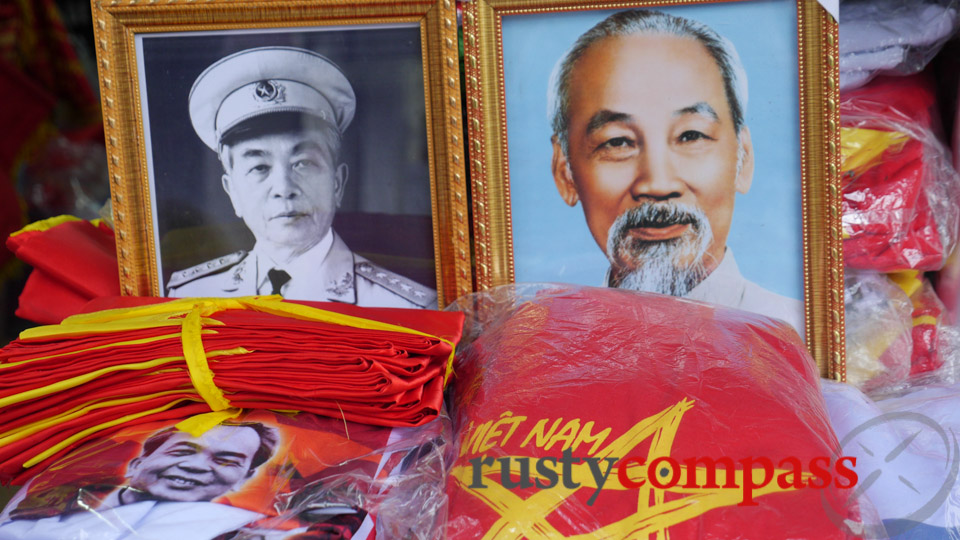
Photo: Mark BowyerVo Nguyen Giap is rivalled only by Ho Chi Minh as a Vietnamese national hero.
General Giap's death on October 4, aged 102, marked the passing of a giant in 20th century history. When he humiliated the French at the battle of Dien Bien Phu in 1954, Giap's "ragtag" army became the first liberation movement in modern times to destroy a Western colonial force in conventional battle.
That accomplishment alone would have been enough to earn him a seat at the table of the 20th century's great historical figures, but Giap had more work to do.
After ousting the French, he went on to be a major force in communist North Vietnam's campaign against US-backed South Vietnam. Giap became a modern national hero second only to Ho Chi Minh.
Giap embodied bravery and sacrifice. Those who met him described him as urbane and highly intelligent. But best of all, he was a winner. And a winner against incredible odds.
His death prompted an enormous outpouring of national grief.
But the General's death came at the most difficult time in decades for Vietnam and its ruling Communist Party - the party he helped create.
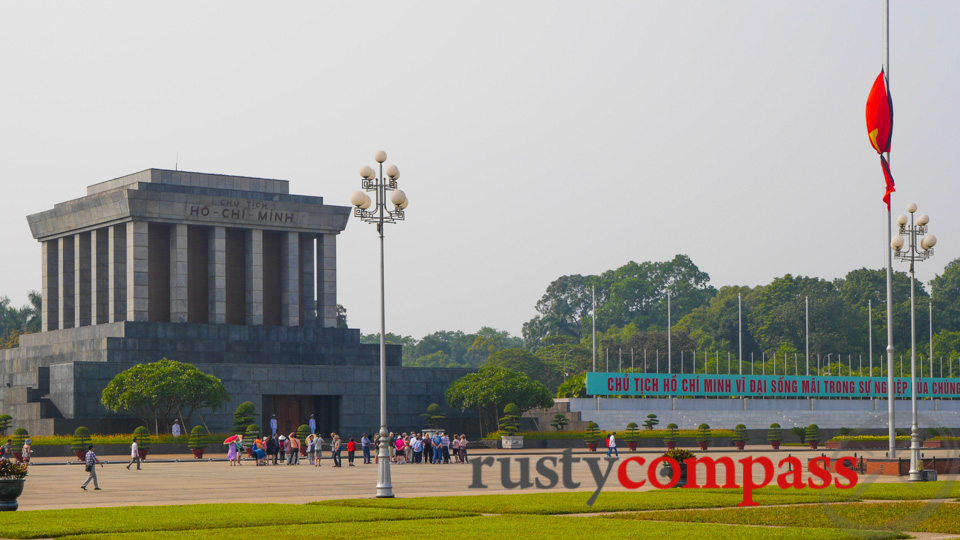
Photo: Mark BowyerA tied Vietnamese flag at half mast overlooking Ho Chi Minh's Mausoleum.
Mired in corruption and nepotism, guilty of gross economic mismanagement and increasingly heavy-handed political repression, Vietnam's sole political party presides over a society of soaring inequality and rapacious opportunism.
The 20 years of rapid development that Vietnam's first phase of economic reform kicked off at the beginning of the 1990s, has been wobbling for the past few years on the back of a burst real estate bubble, a fragile banking sector and a hopelessly broken system of State Owned Enterprises (SOEs) that still forms the country's economic backbone.
Giap's passing reaffirmed the Communist Party's grand narrative of glorious victories and selfless sacrifice. But it was more complicated than that. It also drew into focus the sense of disappointment with the lack of idealism in the current political environment. Local comment again and again reflected the view that the values that Giap represented are absent in the nation's current leadership.
That the General's final political outings prior to his death were critical of party decisions would have further complicated the tone of the official response.
While most Vietnamese people held Giap close to their hearts throughout, his relationship with the party he remained loyal to, was more nuanced. Historians propose that by the late 60s, Giap and Ho Chi Minh were increasingly marginalised in party decision-making. By the 1980s, as hardline control of the party drove Vietnam towards economic collapse, Giap, considered more moderate and pragmatic, is said by historians to have been sidelined.
In the end, General Giap's funeral was, as the people would have expected, second only to that accorded Ho Chi Minh. Two days of mourning were mandated. Bars, nightlife and entertainment were stopped from midday on the Friday until midday Sunday. Normal radio and television broadcasts were suspended and replaced by sombre music and tributes.
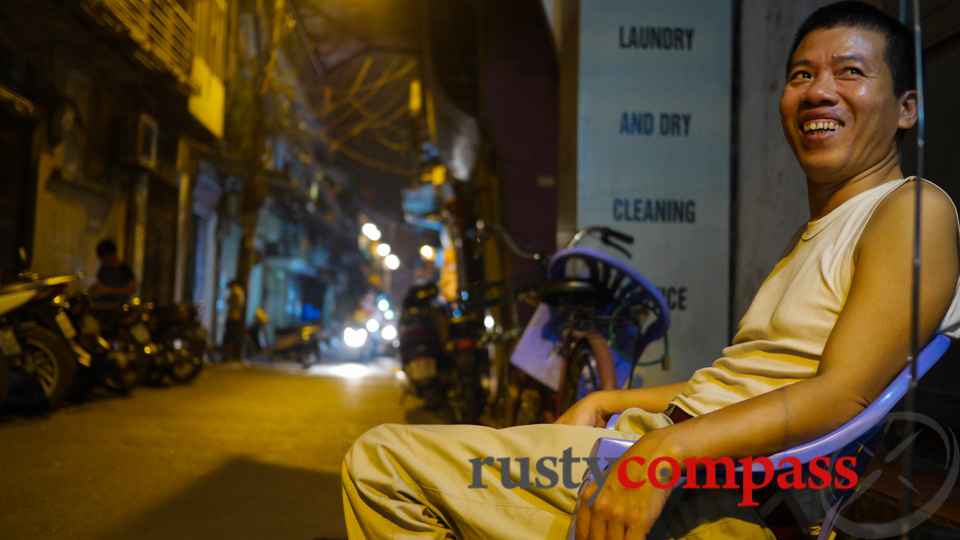
Photo: Mark BowyerTa HIen St, normally packed with revellers on Friday night, went quiet for the General's official mourning.
By chance I was in Hanoi the weekend of the funeral. It was the most important historic event of my twenty plus year association with Vietnam so I felt privileged to be there.
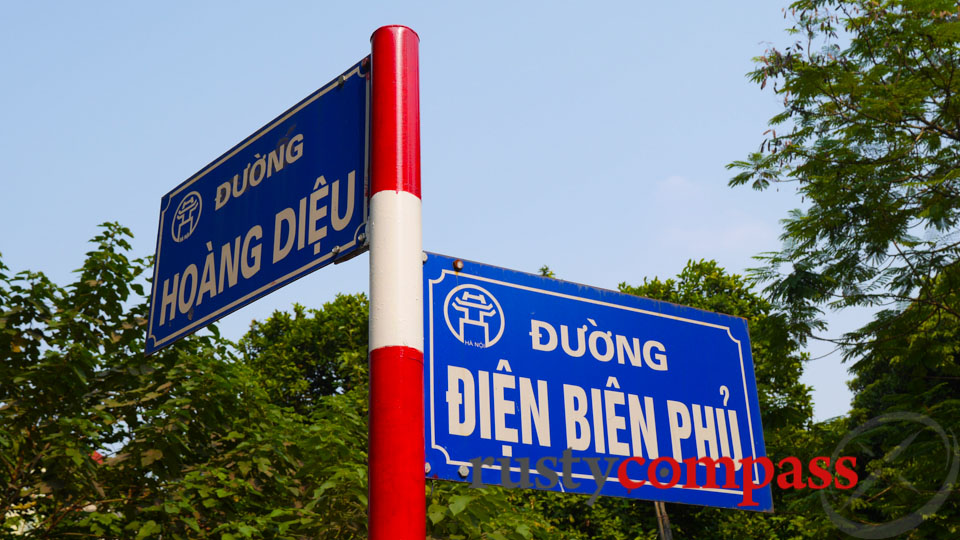
Photo: Mark BowyerGeneral Giap's villa is located on Hoang Dieu St. Hoang Dieu was a Governor of Hanoi who committed suicide after defeat by the French in 1882. The cross street remembers General Giap's most famous victory.
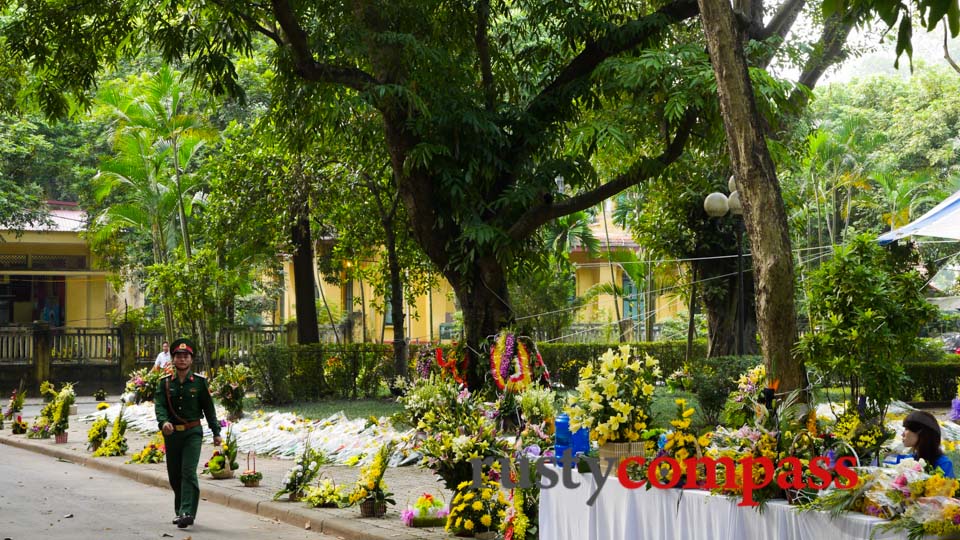
Photo: Mark BowyerFloral tributes line the path to General Giap's Hanoi villa.
I took the opportunity to head out for a look at the mourning. My first stop was the former residence of the General on Hoang Dieu St, where, in the days after his death, hundreds of thousands passed through to offer condolences. The official period for visits had finished by the time I arrived in Hanoi but there were still crowds of all ages gathering outside to pay their respects.
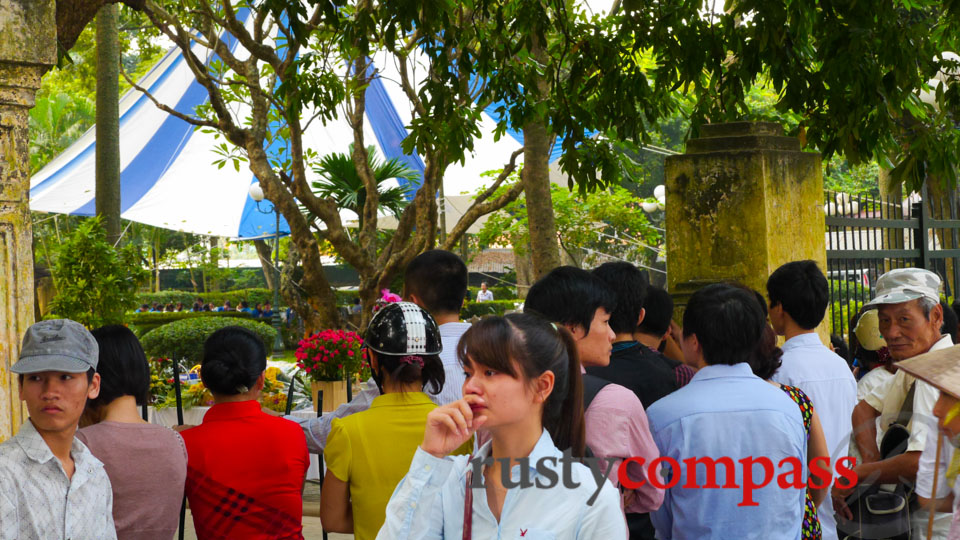
Photo: Mark BowyerMourners outside General Giap's Hanoi Villa
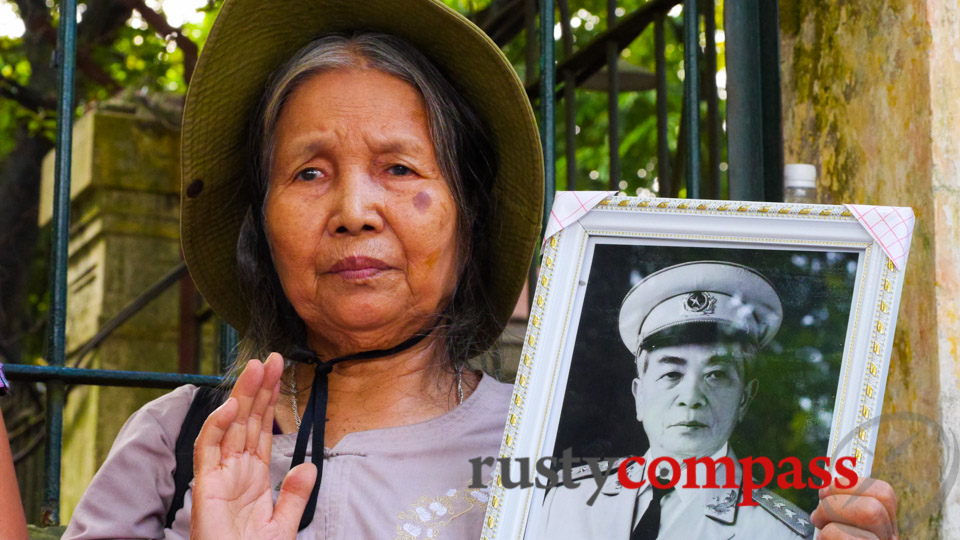
Photo: Mark BowyerMourning General Giap, Hanoi
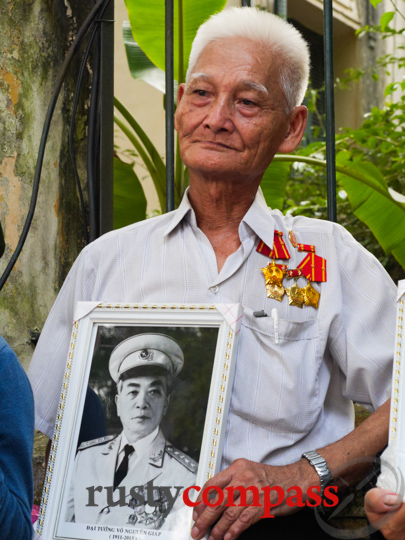
Photo: Mark BowyerOld soldier mourns General Giap, Hanoi
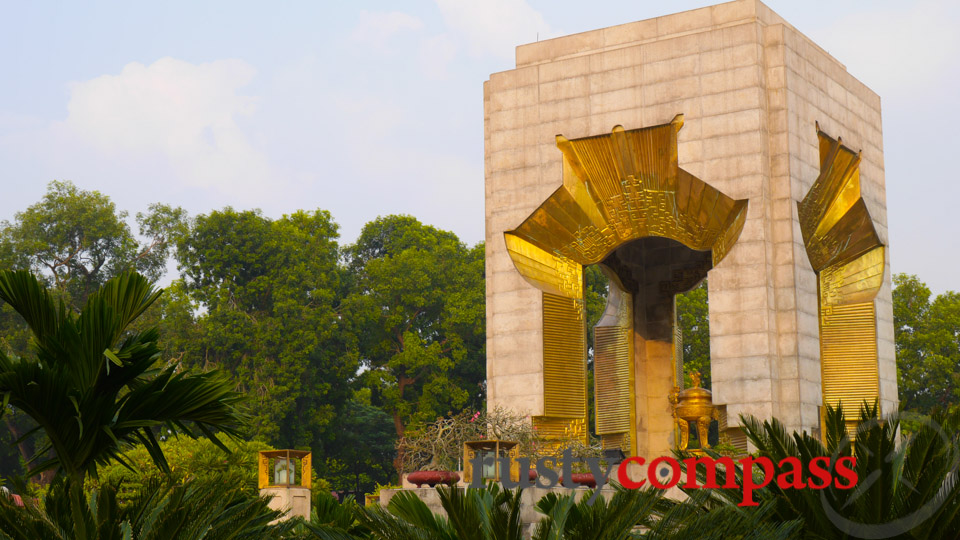
Photo: Mark BowyerThe Martyr's Memorial - close by General Giap's Hanoi villa.
General Giap's death wasn't just a rallying call for old soldiers. There were plenty of young people in the crowds. They were Vietnamese too young to know the first-hand experience of war. In many cases, even their parents wouldn't have been born at the time of the battle of Dien Bien Phu - the climactic achievement of Giap's career.
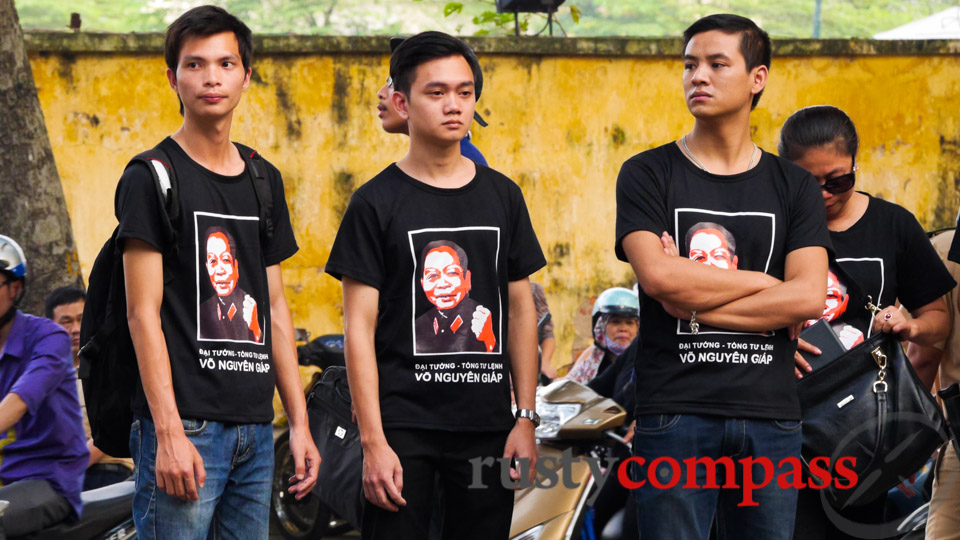
Photo: Mark BowyerMourning General Giap, Hanoi
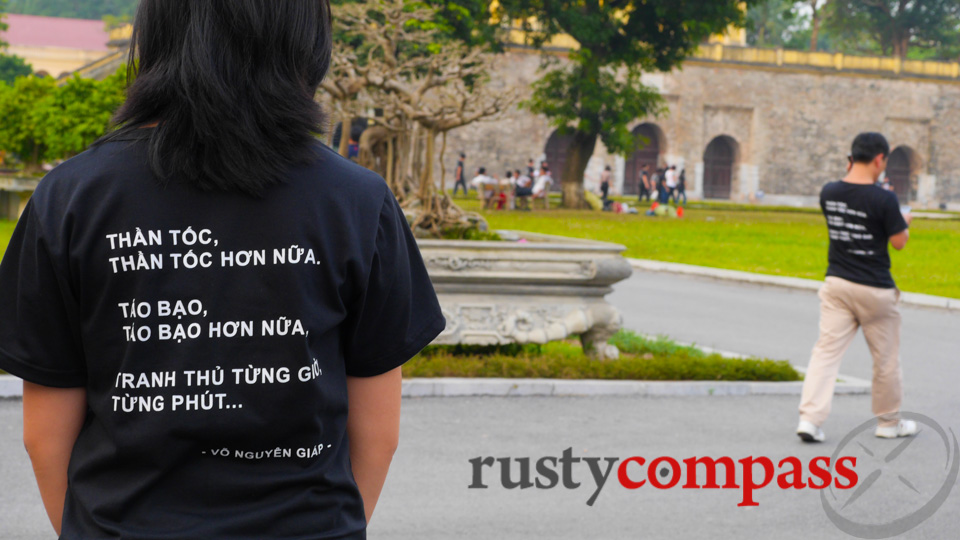
Photo: Mark BowyerOne of General Giap's sayings crudely translates - "fast and then faster, bold and then bolder, use each hour and each minute".
The most memorable experience for me was on the Saturday afternoon. At around 3pm, I decided to head to the area around the National Military Funeral house to get some photos of the gathering crowds.
Saturday morning was the official funeral with the burial planned for the Sunday in Giap's home province of Quang Binh, a few hundred kilometres south.
I decided to approach the area from Hanoi's dyke road assuming it would be the least congested. I jumped out of my taxi, headed towards Tran Thanh Tong St and found myself, by complete chance, in the public line that had just formed to pass General Giap's coffin to bid him a final farewell. I'm not sure why but the crowds there, while sizeable, were not in the tens of thousands that I had anticipated.
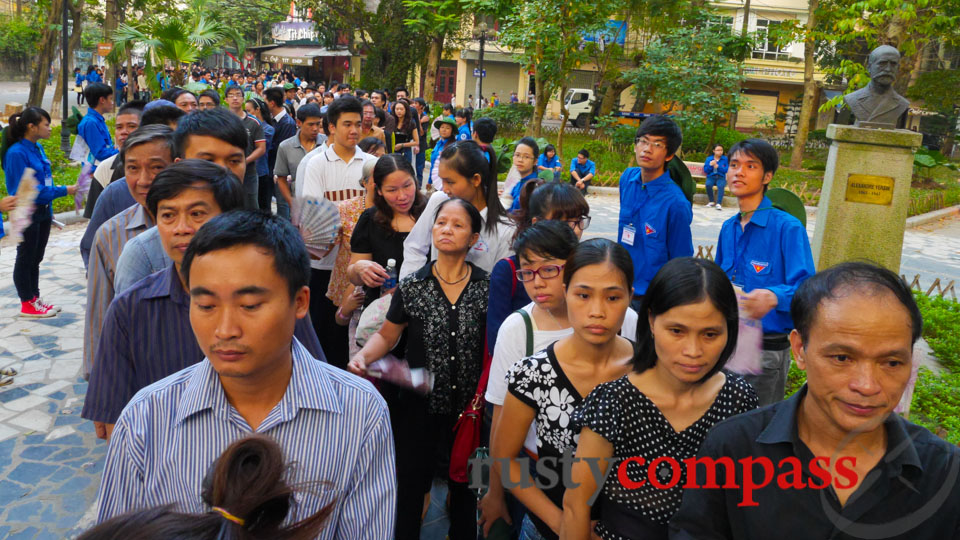
Photo: Mark BowyerCrowds farewelling General Giap. The bust in the background is French / Swiss physician and scientist Alexandre Yersin.
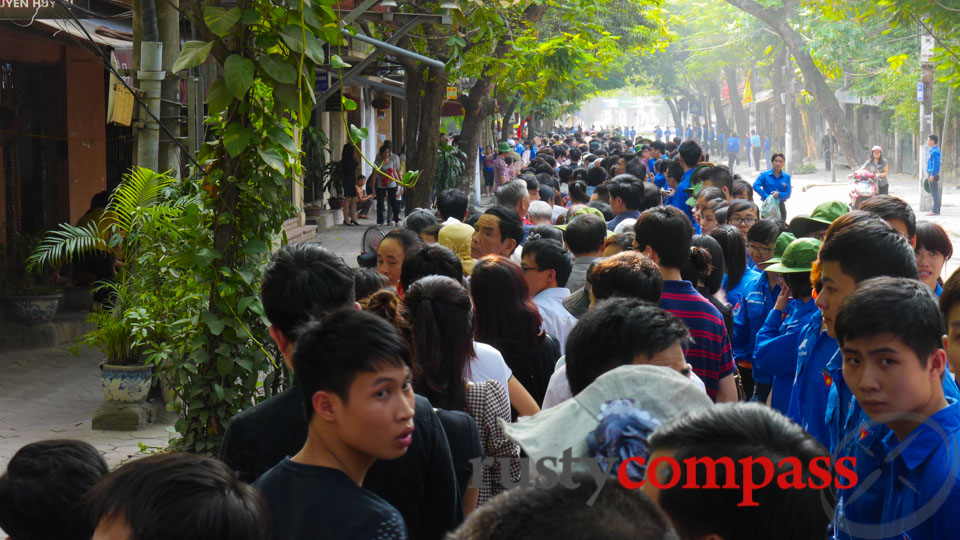
Photo: Mark BowyerLining up to bid General Giap farewell.
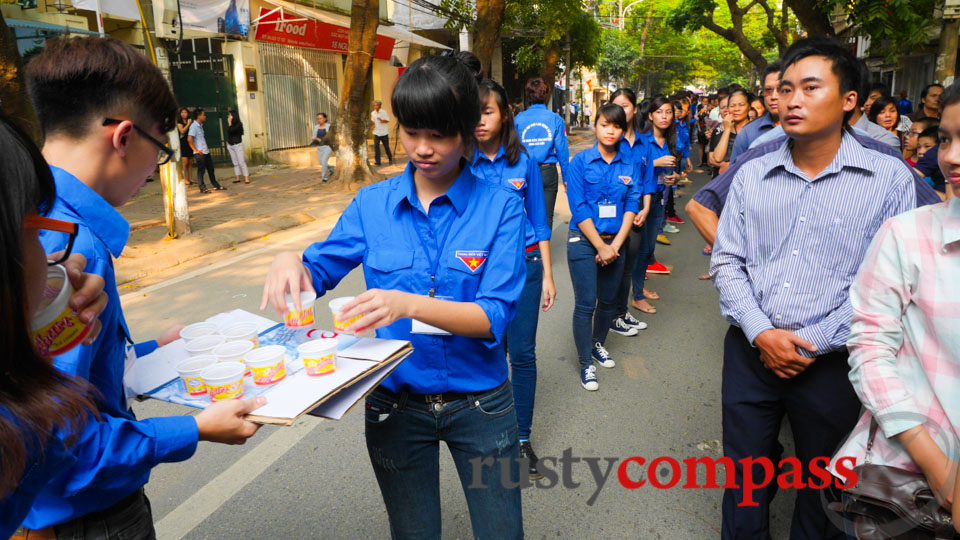
Photo: Mark BowyerCommunist Youth or Thanh Nien, mostly women, distribute water.
I subsequently learned that only a few hours had been allocated for the public to file through.
Even after joining the line, I had no expectation of actually making it to the Military Funeral House. I assumed there would be several lines converging and that's where the tens of thousands would be. We might be waiting 5 - 6 hours or even longer I thought. Still, as the line kept moving, I decided to stay for a couple of hours. I'm glad I did.
The streets all around were closed to traffic. Instructions must have been issued to the entire neighbourhood that there was to be no noise.
This small tree shaded area of Hanoi, one of the most noise-addicted cities on earth, was at blissful peace.
If you've spent any time in Hanoi, you'll appreciate how surreal this was. But it didn't end there.
Orderly, patient queueing is not one of Hanoi's strong points. But this was the most civilised queue I've ever seen in Vietnam. The atmosphere friendly and respectful. There was plenty of chat. There was a sense of community and shared sorrow.
Young people in blue shirts, a majority of them young women, were marshalling the crowds. They were members of the Communist Youth Organisation, Thanh Nien and they deployed a calm, persuasive judgement that is rarely displayed by those in uniform in Vietnam - irrespective of whether you're dealing with police or the security guard at the local shoe store.
These young people were the stars of the day.
Not only were they gently maintaining order, they also distributed complimentary water and bread to an appreciative crowd on a hot afternoon.
The line started to move more quickly and it became clear there were no other lines. This was it.
As we got closer to reaching the official area, a young girl in blue noticed that I was dressed in shorts. She politely told me that those paying respects to General Giap should be in long trousers. That was fair enough. I hadn't expected to be joining the procession and hadn't dressed accordingly.
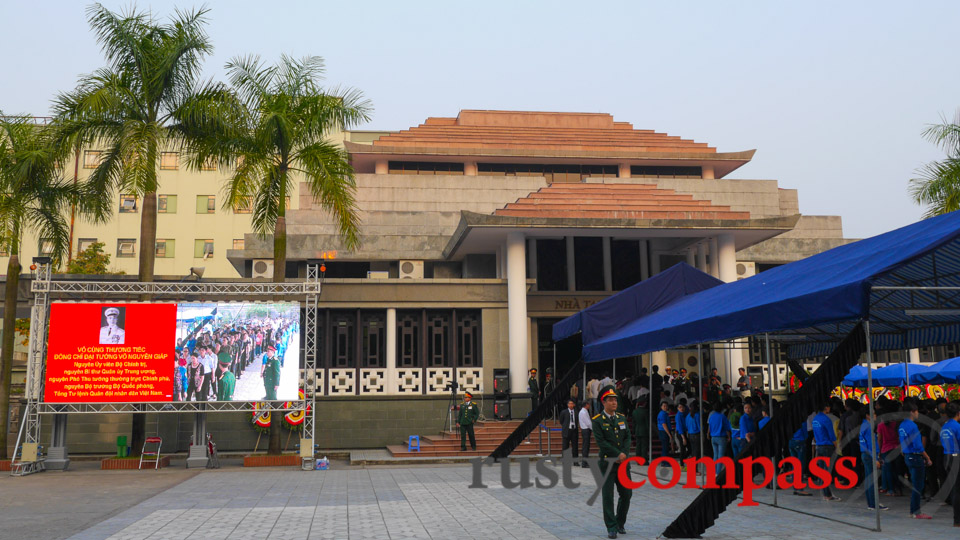
Photo: Mark BowyerMilitary Funeral House, Hanoi
Suddenly my inappropriate attire looked likely to preclude me from bidding the General farewell.
The girl in the blue shirt told me she'd see what she could do. I wasn't optimistic. I'm more than 6ft tall with a 36 waist - dimensions rarely found in Vietnam. The chances of finding a pair of pants to fit seemed slim.
We continued to move forward while she looked into solutions.
After about 10 minutes, she returned with a huge pair of trousers - classic Hanoi old-man pants. I've no idea where she found them. But she told me they were mine to keep as I wouldn't be able to get back afterwards.
I was shuffled off into a cafe to try them out. First I decided to see whether I could get them over my shorts. I doubted I'd be able to carry a pair of shorts by hand into the Funeral House and there wasn't anywhere I could leave them.
I was stunned when the huge pants fitted. In fact they fastened perfectly over my shorts and I was good to go. It wasn't a great look. But this wasn't a fashion parade.
I emerged to a cheer from the 30 or 40 people who had witnessed the whole shorts crisis unfold. It was a lucky moment and I was grateful for the effort that went in to helping a stray foreigner join the crowd of locals in remembering the General. The origin of the trousers will remain a mystery.
We filed quietly and steadily through the Funeral House building, reminiscent of a small scale version of Ho Chi Minh's Mausoleum, bowed our heads at General Giap's coffin and moved on.
It was a special Hanoi day.

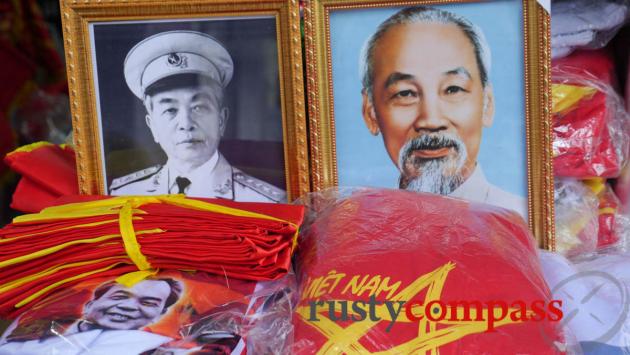



There are no comments yet.